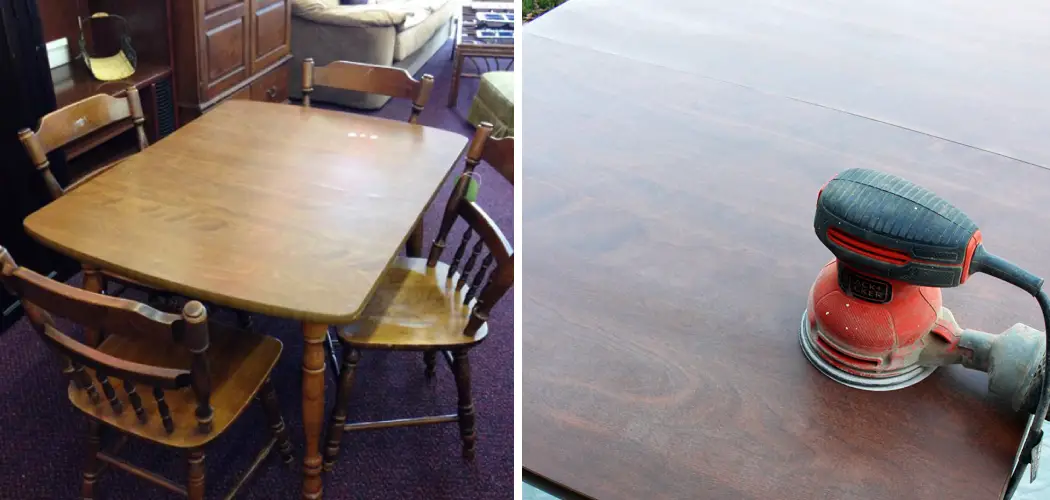Transforming a laminate table with a fresh coat of paint is a fantastic way to revamp its appearance and breathe new life into your furniture. Laminate surfaces present a unique challenge when it comes to painting, but with the right preparation and techniques, you can achieve a beautiful, long-lasting finish.
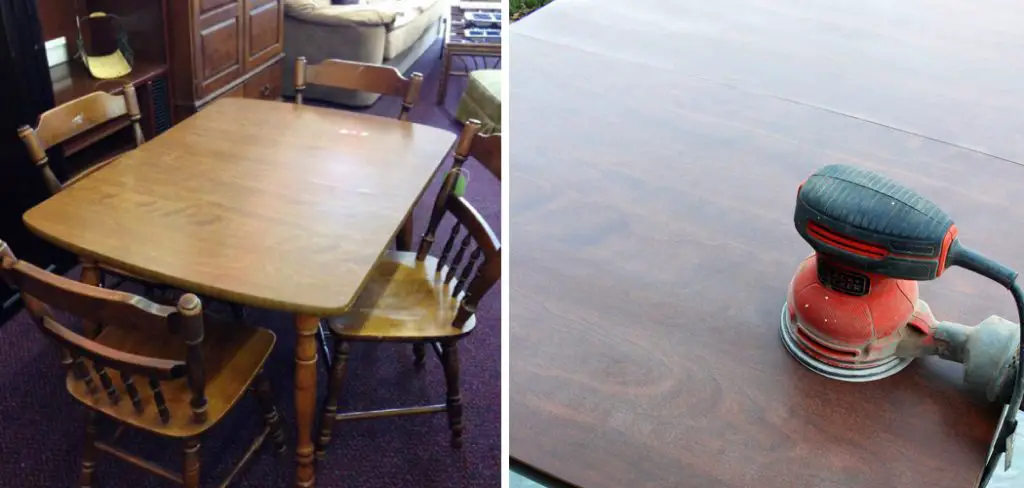
Whether you’re aiming for a sleek modern look or a distressed vintage style, choosing the appropriate type of paint and understanding the necessary steps is crucial. From cleaning and priming the laminate to selecting the ideal paint and applying it effectively, this guide will walk you through the process of How to Paint a Laminate Table, allowing you to personalize your furniture and enhance your space with a custom, eye-catching piece.
The Importance of Painting a Laminate Table
One of the most common pieces of furniture found in homes and offices is a laminate table. These tables are known for their durability, low cost, and wide variety of styles and designs. Despite these advantages, however, they also have one major drawback – they can be difficult to paint.
This is due to the fact that laminate surfaces are non-porous, making it hard for paint to adhere properly. However, with the right tools and techniques, it is possible to successfully paint a laminate table and transform its appearance. In this guide, we will discuss the importance of painting a laminate table and provide tips on how to do it effectively.
Firstly, painting a laminate table allows you to customize and update its look according to your personal style or current trends. Laminate tables often come in plain and basic colors, limiting their aesthetic appeal. By painting it, you can add a pop of color or a unique design that will make the table stand out and complement your space.
Secondly, repainting a laminate table is also more cost-effective than replacing it altogether. As mentioned earlier, these tables are known for their affordability. However, constantly replacing them can still add up in the long run. By painting it, you can give your table a fresh and new look without breaking the bank.
Furthermore, repainting a laminate table can also prolong its lifespan. The paint acts as a protective layer that helps prevent scratches, dents, and other forms of damage to the table’s surface. This is especially important for tables that are frequently used, such as in offices or dining areas. By painting it, you can extend its durability and save yourself the hassle of having to constantly replace it.
10 Methods How to Paint a Laminate Table
1. Prepare the Surface
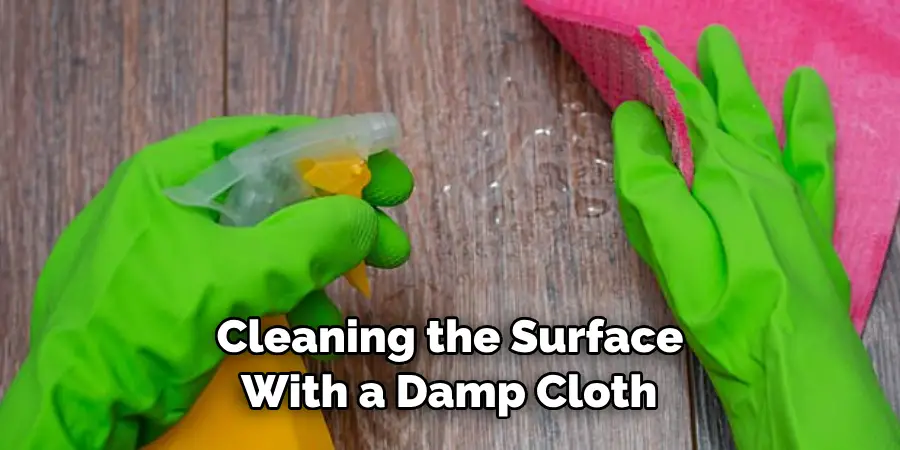
Before you begin to paint your laminate table, it is important to properly prepare the surface. Start by cleaning the surface with a damp cloth and then sanding it lightly with a fine-grit sandpaper. This will help to remove any dirt or oils that may be present and ensure that the paint adheres properly. Once you have finished sanding, wipe down the table with a clean cloth to remove any dust or debris.
2. Prime the Table
After preparing the surface of your laminate table, it is time to apply a primer. Primer helps to create a smooth base for your paint and prevents any unevenness in coverage when painting. Make sure to use an oil-based primer specifically designed for use on laminate surfaces. Apply the primer in thin coats using a brush or roller and allow each coat to dry completely before applying another one.
3. Choose Your Paint
Once you have applied the primer, it is time to choose your paint color. When selecting a paint for use on laminate surfaces, make sure to choose an acrylic latex paint that is specifically designed for use on this type of material. This type of paint will provide better coverage and durability than other types of paints.
4. Apply Your Paint
Once you have chosen your paint color, it is time to start painting! Begin by applying thin coats of paint using either a brush or roller, making sure not to overload your brush or roller with too much paint at once as this can cause drips and runs in your finish. Allow each coat of paint to dry completely before applying another one until you achieve full coverage over the entire surface of your table top.
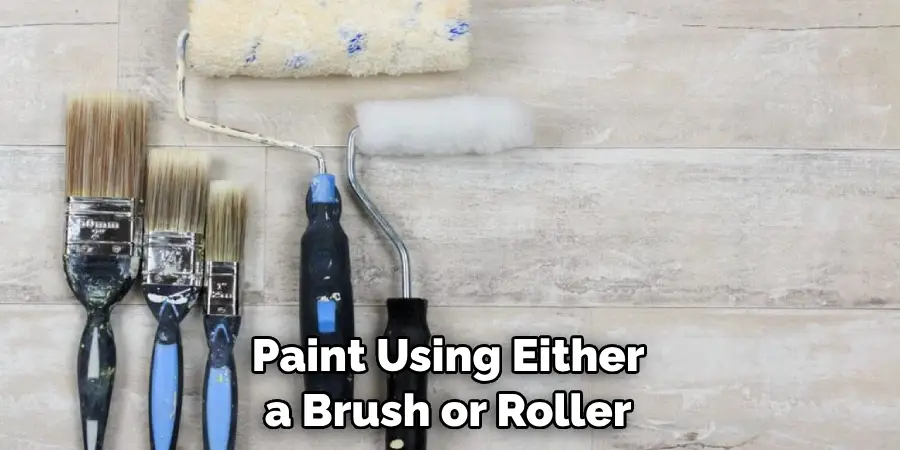
5. Sand Between Coats
To ensure that your painted finish has an even appearance, it is important to lightly sand between each coat of paint using fine-grit sandpaper (400 grit). This will help remove any imperfections, such as bumps or ridges in the finish and give you a smooth finish when all coats are complete. Once you have finished sanding, make sure to wipe down the surface with a damp cloth before applying another coat of paint if necessary.
6. Use Polyurethane Sealant
Once all coats of paint are completely dry, it is important to seal them in order to protect them from scratches and wear over time. To do this, apply two coats of polyurethane sealant using either a brush or roller in thin layers allowing each coat to dry completely before applying another one if necessary. This will give your painted finish extra protection against wear and tear while also providing additional shine and luster over time!
7. Let It Cure
Once all coats are applied and dried completely, let your painted laminate table cure for at least 24 hours before putting any items back on top or using it again. This allows enough time for all layers of sealant and/or varnish applied during the painting process set correctly so that they cannot be easily scratched off by everyday usage afterward.
8. Use Protective Covers
To further protect your newly painted laminate table from scratches or other wear, consider investing in some protective covers. These can include felt pads placed underneath items such as chairs, placemats, coasters, etc., which can prevent scuffs from occurring. Additionally, these covers can also help keep dust away from settling onto freshly painted surfaces.

9. Clean Regularly
In order for your newly painted laminate table look its best, regular cleaning should be done. Use only mild soap solutions mixed with water when cleaning, as harsher chemicals could damage both the sealant used during the painting process as well as the underlying surface itself. Additionally, avoid scrubbing too hard when wiping down surfaces, as this could cause scratches over time!
10. Touch Up As Needed
Finally, remember that even after following all the steps mentioned above, there may still be some areas that need touch-up work due its constant usage. If so, consider investing in some matching touch up paints which can be used to fill in areas where the existing layer has been scratched off due to its normal wear & tear.
With proper care taken throughout the life span of the furniture piece itself, there’s no reason why newly painted laminate tables shouldn’t last many years come!
Things to Consider When Painting a Laminate Table
Laminate tables are a popular choice for home furnishings due to their durability and affordability. However, over time they can become worn or outdated, leading many people to consider painting them as a way to give them new life. Painting a laminate table is not difficult, but there are some important factors to consider before starting the project.
Surface Preparation
The key to successfully painting a laminate table is proper surface preparation. This involves thoroughly cleaning the table to remove any dirt, grime or wax that may prevent paint from adhering properly. It’s important to use a degreaser and then rinse with clean water before sanding the table lightly with fine-grit sandpaper. This will help the primer and paint bond better to the laminate surface. It’s also a good idea to use a tack cloth to remove any remaining dust or debris before painting.
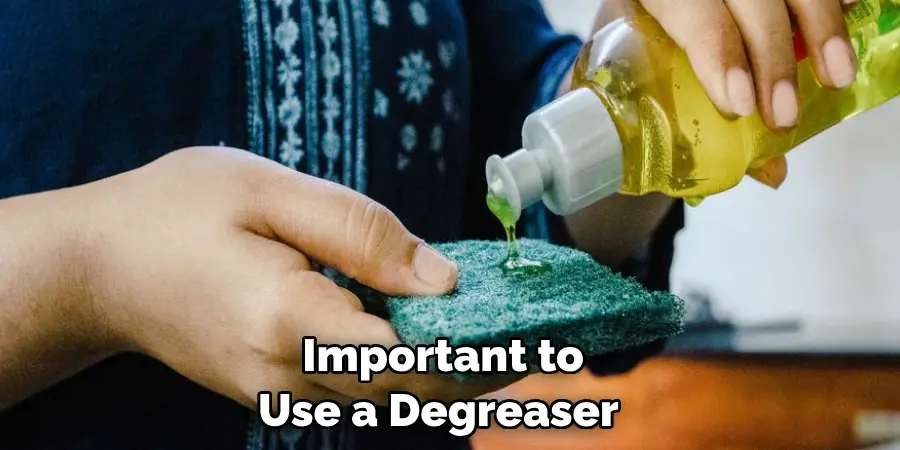
Choosing the Right Paint
When it comes to selecting paint for a laminate table, it’s important to choose one that is specifically formulated for use on non-porous surfaces. This type of paint will have better adhesion and durability compared to traditional paints. Some options include oil-based or acrylic paints, as well as spray paints. It’s best to avoid water-based paints, as they may not adhere well to the laminate surface.
Proper Technique
To achieve a professional-looking finish, it’s important to use proper painting techniques when working with a laminate table. This includes using thin coats of paint and allowing each coat to dry completely before applying the next. It’s also important to use even strokes and avoid overloading the brush or roller with paint, as this can lead to drips and a bumpy finish.
Sealing the Paint
Once the table has been painted and allowed to dry completely, it’s important to seal the paint for added durability. A clear topcoat or polyurethane can be applied using a brush or roller, and will help protect the paint from scratches, stains, and fading. It’s important to follow the manufacturer’s instructions for the recommended number of coats and drying time between each coat.
Maintenance
Proper maintenance is also key to keeping a painted laminate table looking its best. Avoid using harsh chemicals or abrasive cleaners that can damage the painted surface. Instead, use a mild soap and water solution for regular cleaning. It’s also important to protect the table from extreme temperatures and direct sunlight, as these can cause the paint to crack or fade over time.

Common Mistakes to Avoid when Painting a Laminate Table
One of the most important things to keep in mind when painting a laminate table is that it requires different techniques and materials than painting wood. Many people make the mistake of treating laminate as if it were wood, resulting in a poor finish or even damage to the table.
To help you achieve the best results possible, we’ve put together a list of common mistakes to avoid when painting a laminate table.
Not cleaning the table properly before painting
Before you start painting, it’s important to thoroughly clean the surface of your laminate table. This means removing any dust, dirt, or grease that may have accumulated on the surface. Failure to do so can result in poor adhesion and an uneven finish.
Skipping the primer
Priming is a crucial step when painting a laminate table. Without primer, the paint will not adhere properly to the slick surface of laminate and may peel or chip off easily. Make sure to use a good quality bonding primer specifically designed for laminate surfaces.
Using the wrong type of paint
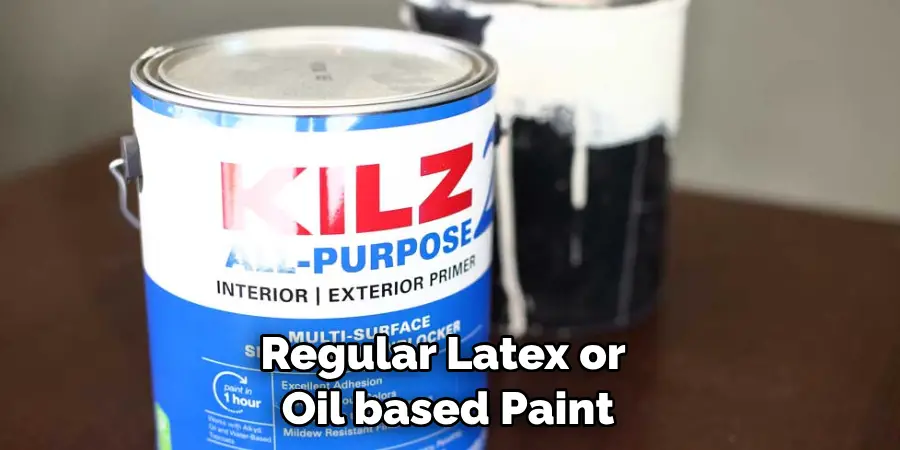
As mentioned earlier, painting laminate requires different techniques and materials than painting wood. Using regular latex or oil-based paint will not work well on laminate and may result in a streaky or uneven finish. Instead, opt for a high-quality enamel or acrylic paint that is specifically formulated for laminate surfaces.
Not sanding the table before painting
While it may be tempting to skip this step, sanding is an important part of preparing a laminate surface for painting. Lightly sanding the table will help to roughen up the surface and create a better bond with the primer and paint. Be sure to use a fine-grit sandpaper and do not sand too aggressively, as this can damage the laminate.
Conclusion
Painting a laminate table can be a great way to instantly transform the look of a space and make it more unique and beautiful. With the right supplies and tips, you’ll have your room looking its best in no time! Whether you are creating a fun DIY project or giving furniture an upgrade, painting a laminate table is easy and straightforward.
Keep in mind that some priming and sanding beforehand may be necessary for optimal results. Finally, don’t forget the clear polyurethane coat when you’re done as it will help protect your color. Now go out there and get creative with your decor by learning how to paint a laminate table!

